LIFE VENDING MACHINE
INSTALLATION
Life Vending Machine is an installation that represents the process from animal-hunting to animal product production. We found that the decrement of the animal's population is closely related to human consumption. Through experiencing our installation, we hope it can raise people's awareness of this problem and reduce the need for animal products.
LINK TO THE BLOG FOR MORE DETAILRole
Concept Development, Product Design, Fabrication, Physical Computing, Front-End Development
Tools
Serial Communication with Arduino and p5.js
Collaborator
Date
Nov - Dec 2019
(About 6 weeks)
Motivation
We felt that the endangered animal is quite a big topic and wanted to narrow down the target to animal hunting, which directly related to us because it might be the original process of some products that we will buy in our daily life. We can’t control climate-changing easily, but we can avoid purchasing the products which will harm animals or made by animals. If our installation can show the real process of the products made by endangered animals, we can arouse the viewer’s awareness of protecting these animals. Because most of the animal hunting is caused by profit from trading, we wanted the people to put the coins in the box, which means trading started.
Sketch & Prototype
We used a single screen behind the box to show info we wanted our users took away. A vending machine appearance would be the one of the most intuitive ways to simulate the buying process. So we designed a vending machine and let our users pick up any animal and eventually, there would be a corresponding animal product coming out from the machine. Also, we would print a 'receipt' for users where users could learn more about the chosen animal current situation.

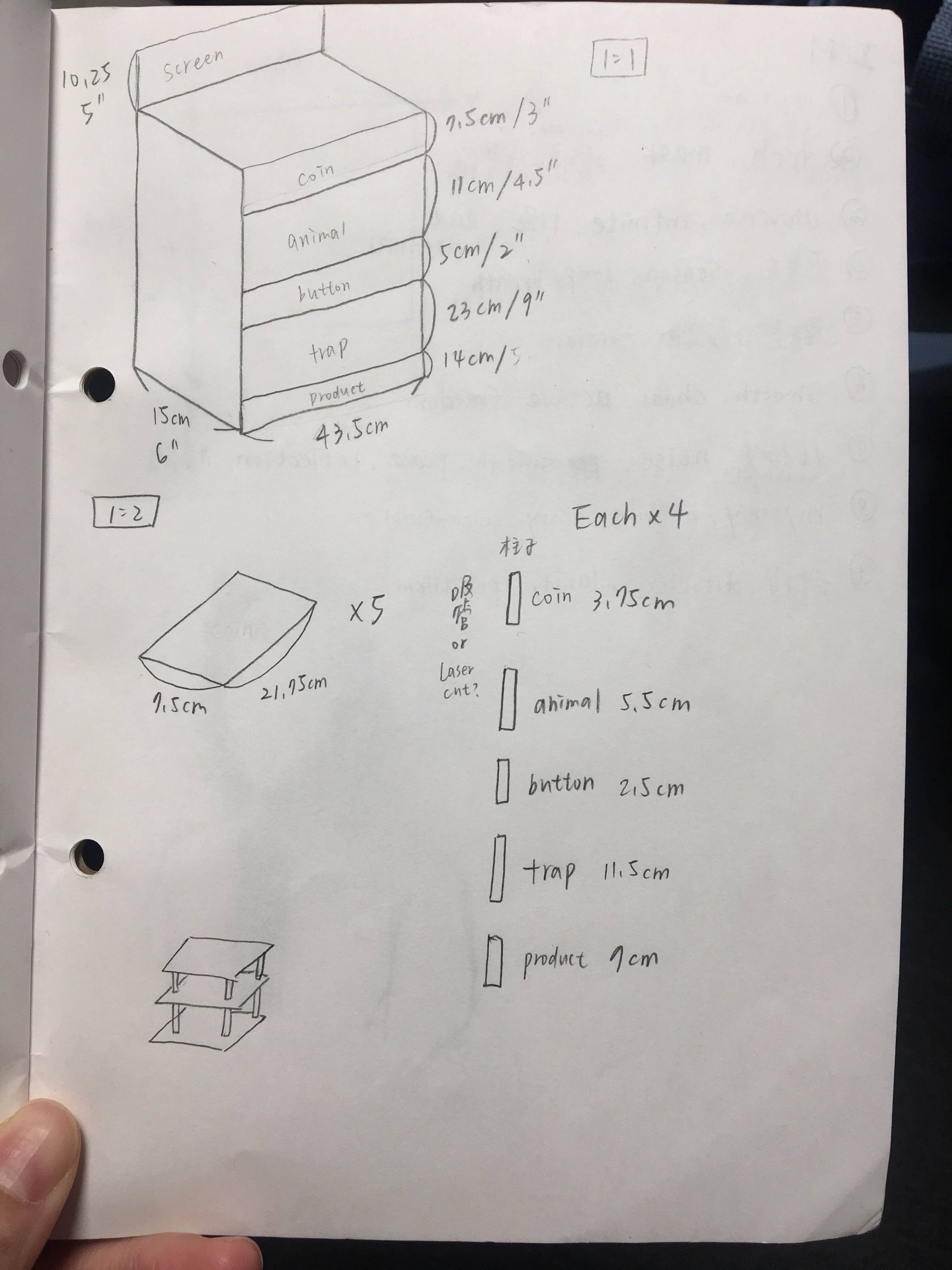

Final Design
We changed the trap to a hole on the third floor instead of a box since it might affect the animation of the back screen. For the animal choosing, we decided to choose elephants, tigers, pangolins, and sea turtles which are the most endangered animals whose death rate is closely related to human hunting on WWF (World Wide Fund for Nature) website.
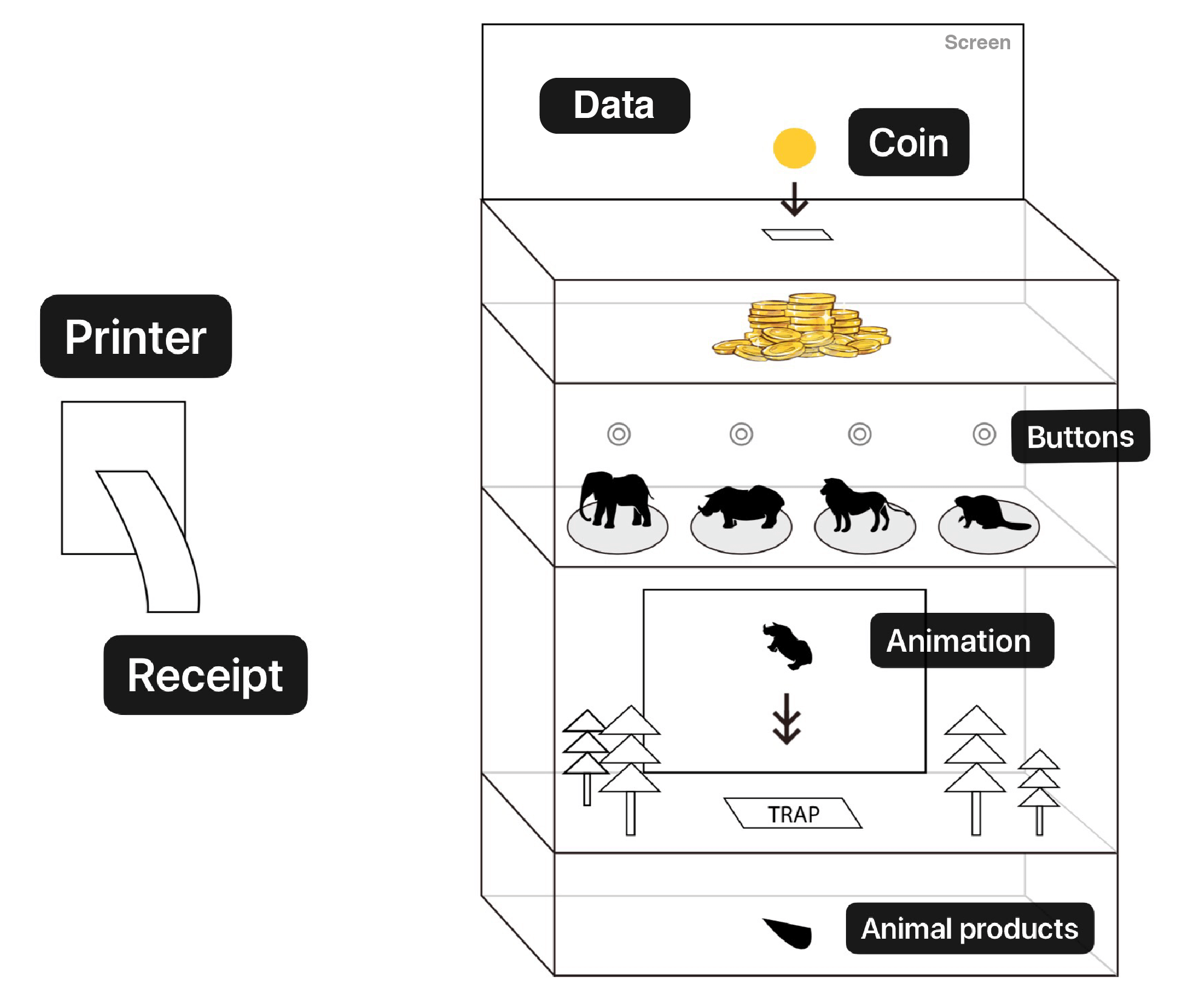
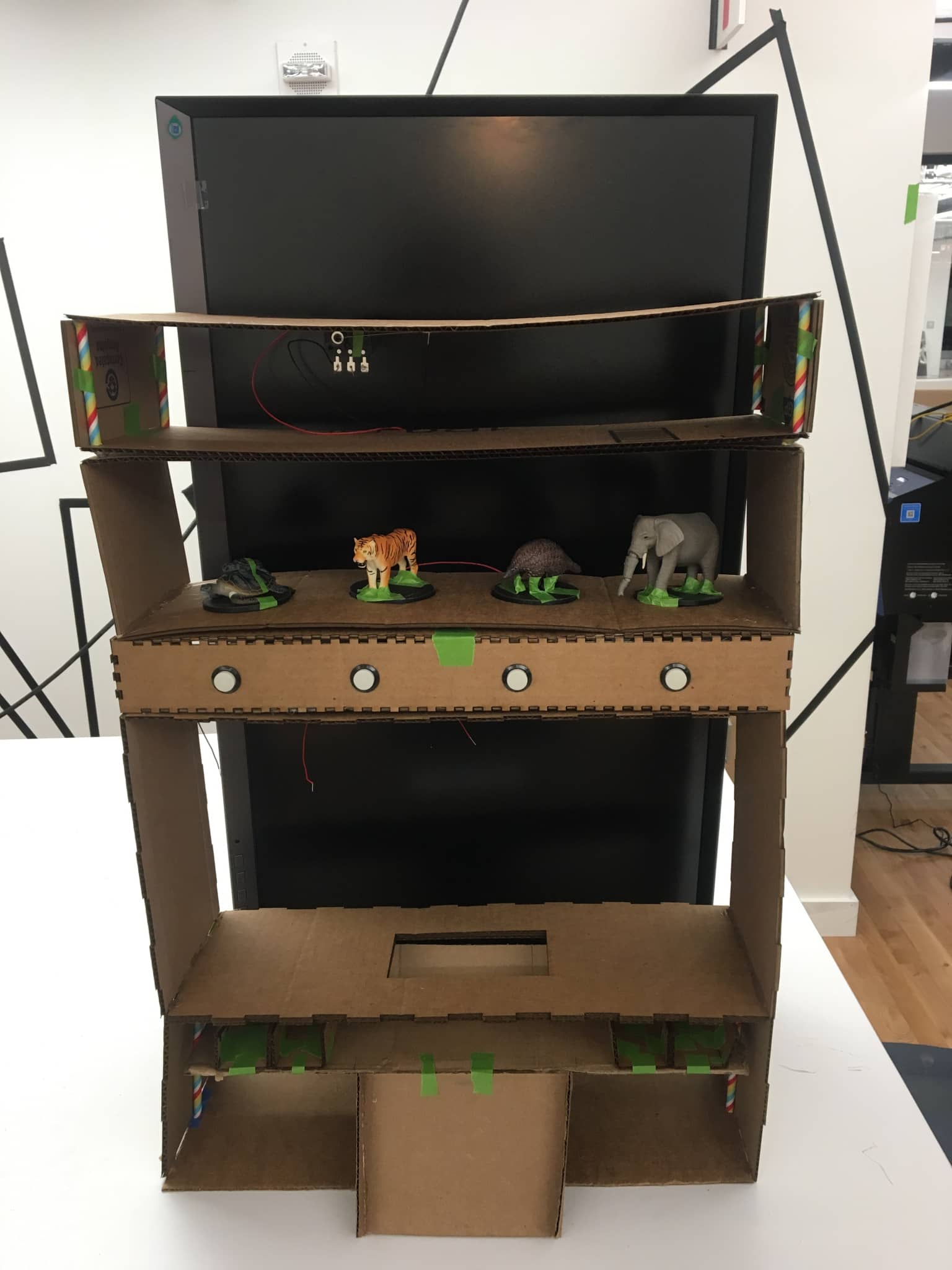
User Flow

Process & Technical Testing
Floor1 - Insert the coinWe used the whisker switch as a trigger when people insert the coin. Because microswitches offer tactile feedback (clicky feeling), switch close when pressed and will be back to the open state once released.

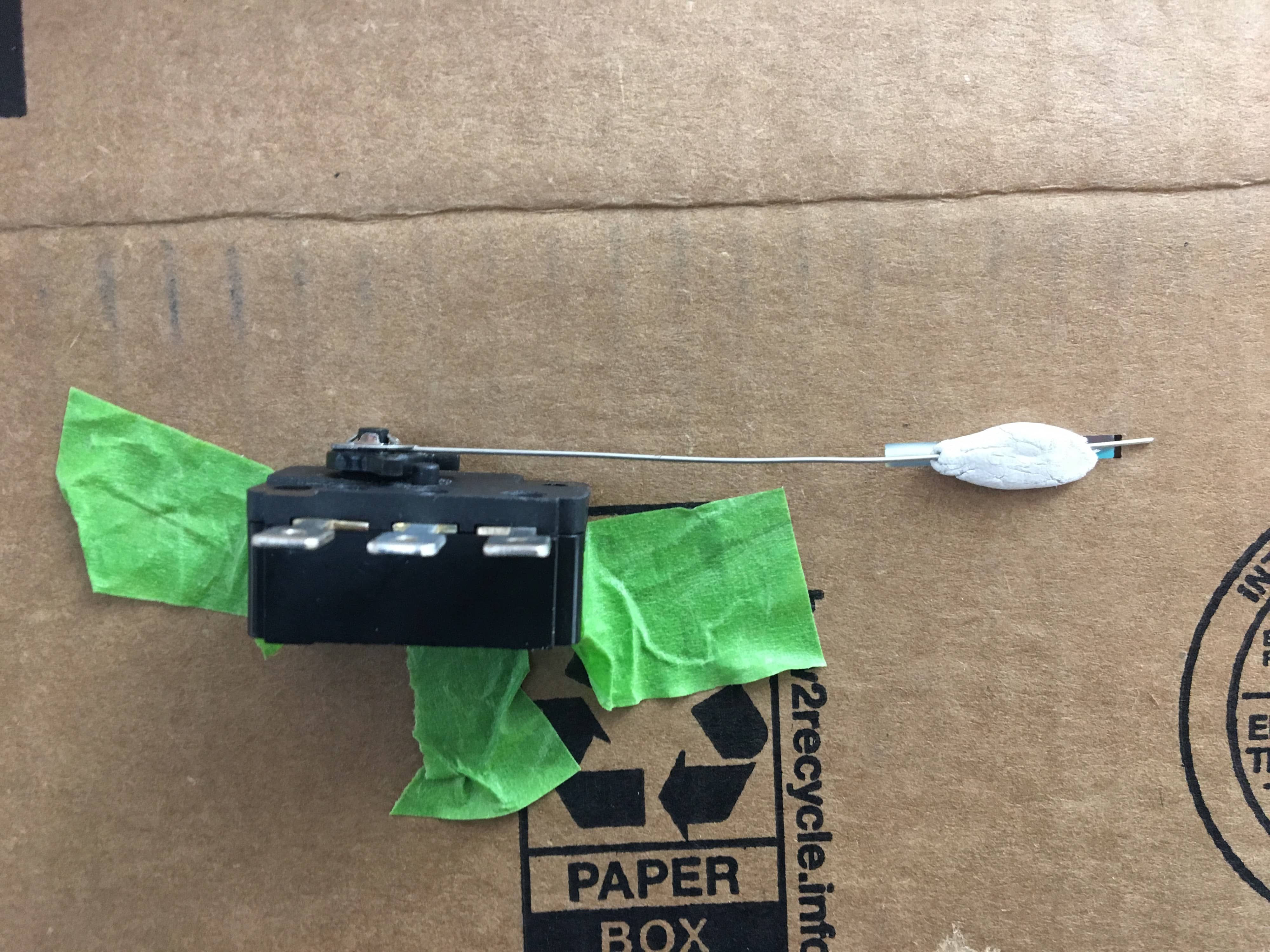

Four push buttons will control each animal spinning.

In order to let the animals spin on the stepper motor, I used Fusion 360 to design the base for the animals standing on it and print it by using the 3D printer. This base can mount on the stepper motor so the animals can spin 360 degrees when the motor started.


 Floor3 - Trap and animation
Floor3 - Trap and animation To create the trap doors, we used servo motor and stuck the acrylic on it. Also, we let the servo shake to create the effect like the animals try to get out when it closes.


After the user pressed the button, the animation will play on the screen that we placed behind the vending machine. For the animation, We plan to create the characters(in animation) using Cinema 4D, which fits the animal models better in the visual aspect. Here is the characters and animation made by my partner Monni Qian.
 Phase 1: A big scene
Phase 1: A big scene Represent a human-animal co-existing world
 Phase 2: Individual animal falling
Phase 2: Individual animal falling A simulation of animal falling into trap
 Phase 3: Animal asks for help while struggling
Phase 3: Animal asks for help while struggling Add sentimental value and inspire users' empathy. Also, this part is accompanied with physical trap shaking.
 Phase 4: A "Processing" scene
Phase 4: A "Processing" scene Fill time blankness before the product comes out. Also, it could give user a hint of what is happening soon.
 Full animation Floor4 - Vending machine coil and product design
Full animation Floor4 - Vending machine coil and product design To make the vending machine work, we took the real vending machine as a reference. We created the coil and printed it by the 3D printer to let the product come out individually, as same as the vending machine. Then, we mounted the coil on the stepper motor and had several testing to test the effects.
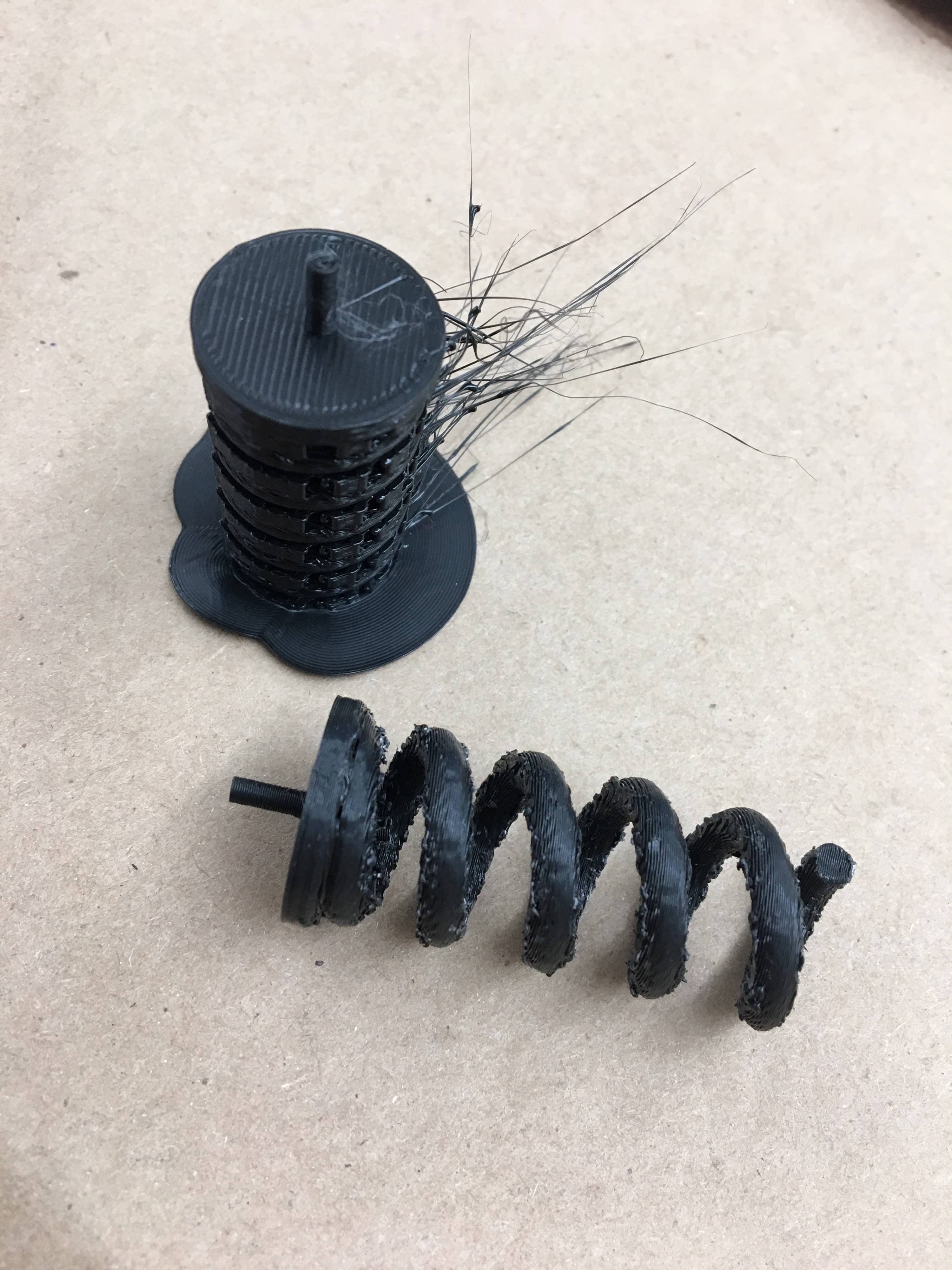



Different animals were killed to made different products. So we have different types of products to cut out. We tried these two designs first and finally chose the red acrylic and made the angle rounded because the products are “bloody” and it looks prettier in a rounded edge. Also, we changed the content and made it clearer than before.



We bought the thermal printer from the Adafriut. When the user experiences the whole process, they will get the receipt, which has more information on it related to more products made by the animal they chose and their current situation.
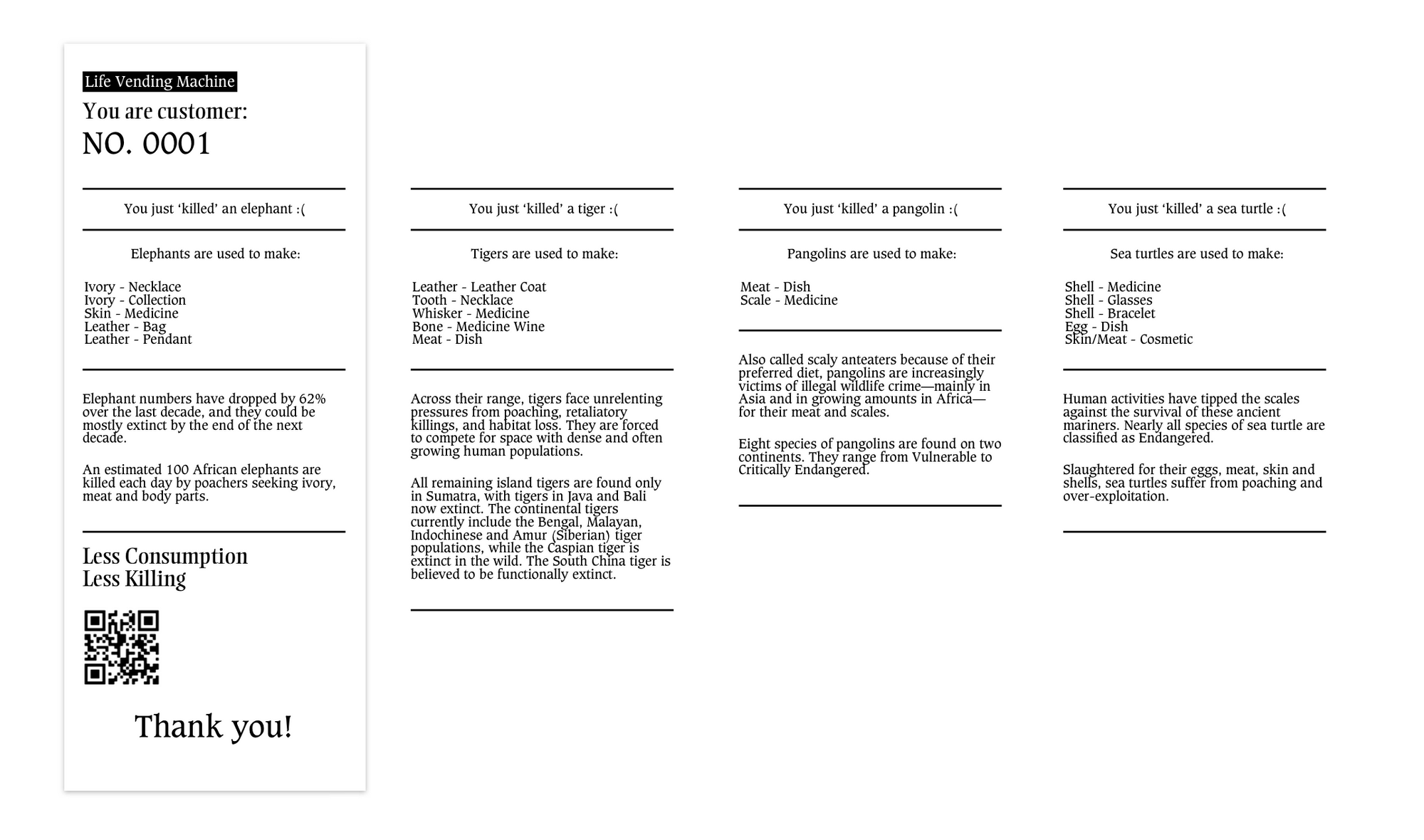

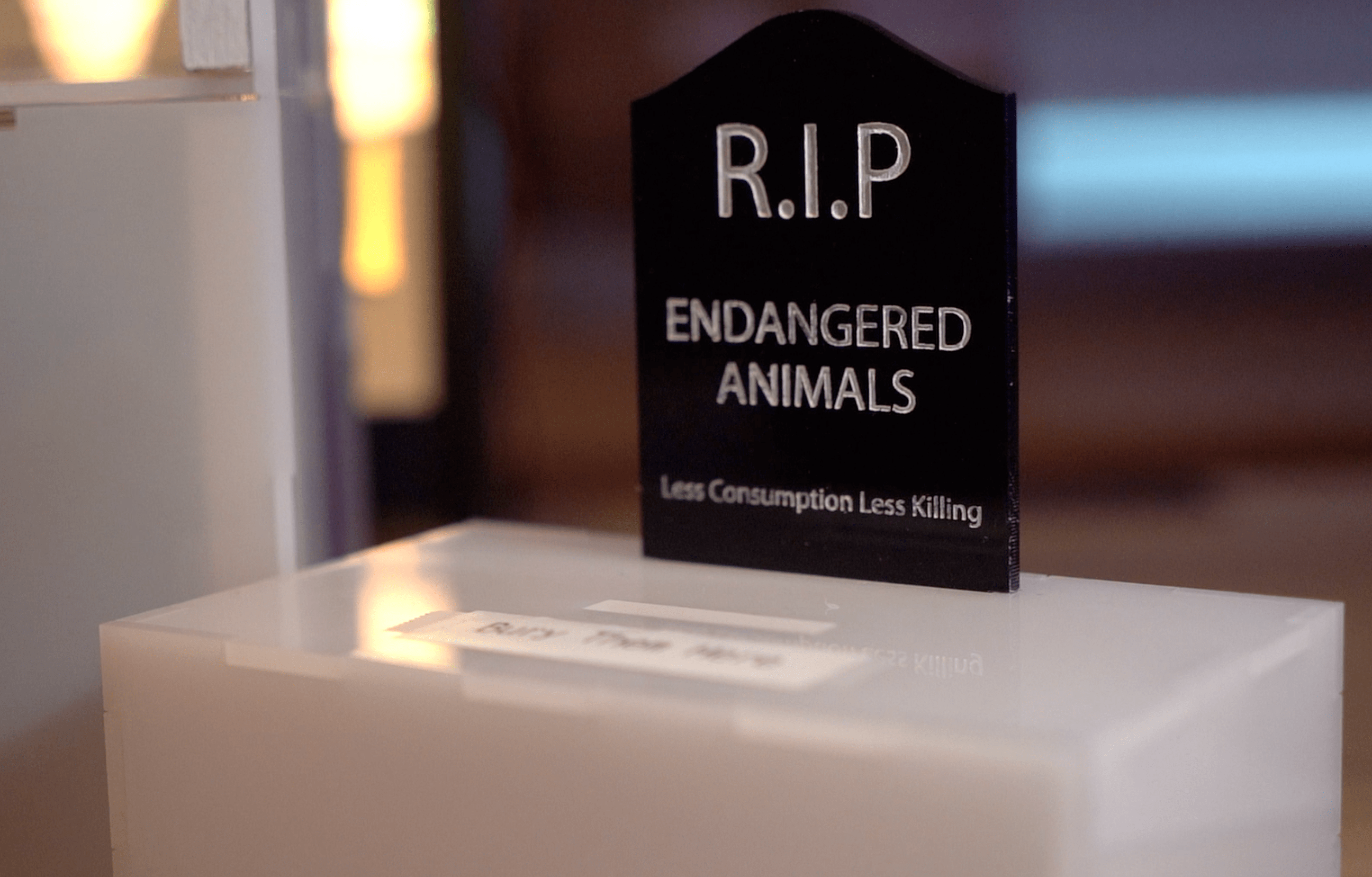
What's next?
- Pepper's ghost effect could be used in the animation section that animal fall into the trap. The 3d projection effect will leave users more immersive experience.
- Screen data visualization(number of killing) could appear as a takeaway after user finish the experience instead of being shown at the beginning.
- Since we are talking about endangered animal protection, we should've considered more about whether the fabrication material is eco-friendly or not. Also, printer cost paper




2020 Liberty Science Center Engineers Week


Copyright © 2021 Stacy Yuan. All Rights Reserved.

